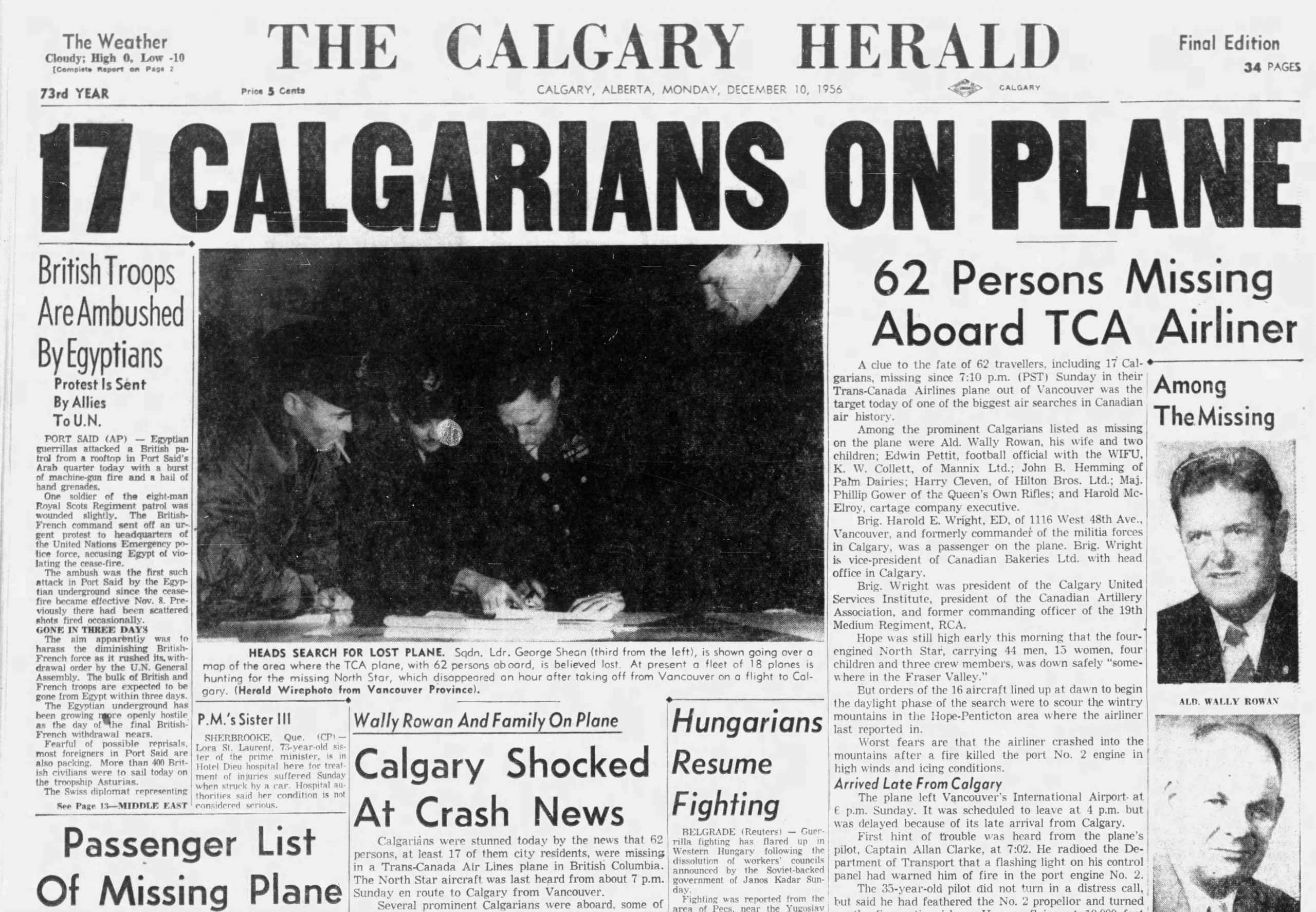World Updates | Update information about politics and social around the world
Tragic Plane Crash: Causes, Consequences, And Safety Lessons Learned
In the aftermath of every tragic plane crash, the world is left grappling with questions about what went wrong. What caused the plane to go down? What could have been done to prevent it? And what lessons can we learn from this tragedy to make sure it doesn't happen again?
Editor's Notes: "Tragic Plane Crash: Causes, Consequences, And Safety Lessons Learned" have published today September 25, 2023. Understanding the causes and consequences of plane crashes is critical to improving air safety and preventing future tragedies.
Our team has been analyzing and digging into information, we put together this "Tragic Plane Crash: Causes, Consequences, And Safety Lessons Learned" guide to help you make the right decision.
Key Differences and Key Takeaways:
| Causes | Consequences | Safety Lessons Learned |
|---|---|---|
| Human error | Loss of life | Improved pilot training |
| Mechanical failure | Damage to property | More rigorous aircraft inspections |
| Weather conditions | Delays and cancellations | Better weather forecasting |
| Sabotage | Loss of trust in the aviation industry | Increased security measures |
| Terrorism | Global outrage | International cooperation to combat terrorism |
Main Article Topics:
In this guide, we will explore the causes, consequences, and safety lessons learned from tragic plane crashes. We will discuss the different factors that can contribute to a plane crash, the devastating impact that these crashes can have, and the steps that can be taken to prevent them from happening again.
FAQ
This FAQ section provides answers to commonly asked questions and addresses misconceptions surrounding tragic plane crashes, their causes, consequences, and safety lessons learned.
Question 1: What are the most frequent causes of plane crashes?
Plane crashes can result from various factors, including pilot error, mechanical failures, and adverse weather conditions. Human error, such as mistakes in judgment or operating procedures, is often a contributing factor. Additionally, aircraft malfunctions, ranging from engine failures to control system issues, can lead to catastrophic events.
Question 2: What are the consequences of plane crashes?
Plane crashes can result in devastating consequences, including fatalities, injuries, and psychological trauma for passengers, crew, and their families. Moreover, crashes can cause significant damage to infrastructure, disrupt transportation networks, and impact local economies.
Question 3: What safety lessons have been learned from past plane crashes?
Investigating past plane crashes has led to crucial safety enhancements, such as improved aircraft designs, advancements in training programs, and the implementation of stricter regulations. These lessons have contributed to a significant reduction in the frequency and severity of plane crashes over time.
Question 4: How can we prevent plane crashes in the future?
Preventing plane crashes requires a multi-faceted approach. This includes ongoing improvements in aircraft technology, enhanced pilot training, adherence to safety protocols, and robust maintenance procedures. Additionally, collaboration between aviation authorities, airlines, and manufacturers is essential to share best practices and implement effective safety measures.
Question 5: What role do weather conditions play in plane crashes?
Adverse weather conditions, such as severe storms, turbulence, and visibility issues, can significantly impact aircraft safety. Pilots rely on accurate weather forecasts and ground-based radar systems to make informed decisions during flight. However, unpredictable weather patterns can pose challenges and contribute to the risk of accidents.
Question 6: How can passengers contribute to their safety during a flight?
Passengers play a vital role in ensuring their safety during a flight. Familiarizing themselves with emergency procedures, paying attention to crew instructions, and refraining from any actions that could compromise safety are crucial. Additionally, being aware of potential risks and reporting any concerns to the cabin crew can contribute to a safer flying experience.
In conclusion, understanding the causes, consequences, and safety lessons learned from tragic plane crashes is essential to improve aviation safety and prevent future accidents. Collaboration, technological advancements, and adherence to safety protocols are vital in creating a safer air travel environment.
Transition to the next article section: To delve deeper into the topic of plane crashes and their implications, explore the following article sections:
Tips
In the aftermath of Tragic Plane Crash: Causes, Consequences, And Safety Lessons Learned, it is imperative to glean valuable lessons and implement effective preventative measures to enhance aviation safety.
Tip 1: Enhance Pilot Training and Proficiency
Regular and comprehensive training programs are crucial for pilots to develop and maintain proficiency in handling various flight scenarios, including emergency situations.
Tip 2: Improve Aircraft Maintenance and Inspection Procedures
Rigorous maintenance and inspection protocols help detect potential mechanical issues early on, reducing the risk of catastrophic failures that can lead to crashes.
Tip 3: Advance Air Traffic Control Technology
Implementing state-of-the-art air traffic control systems can enhance situational awareness, reduce communication errors, and optimize airspace utilization, minimizing the likelihood of mid-air collisions.
Tip 4: Promote Safety Culture in the Aviation Industry
Fostering a culture that prioritizes safety at all levels, from design to operations, is essential for preventing accidents and fostering a sense of responsibility among all stakeholders.
Tip 5: Enhance Passenger Safety Features
Investing in advanced passenger safety features, such as reinforced seat structures, fire-resistant materials, and improved evacuation systems, can significantly reduce the severity of injuries and fatalities in the event of a crash.
Tip 6: Utilize Advanced Aviation Technology
Adopting cutting-edge technologies, such as autonomous flight systems, automated collision avoidance systems, and enhanced weather forecasting capabilities, can assist pilots in making informed decisions and mitigating potential hazards.
Tip 7: Conduct Thorough Accident Investigations
Thorough and impartial accident investigations are vital for identifying the root causes of crashes and developing targeted safety interventions to prevent similar incidents from occurring.
Tip 8: Foster Collaboration and Information Sharing
Encouraging collaboration among aviation authorities, manufacturers, airlines, and safety organizations facilitates the sharing of best practices, lessons learned, and innovative safety solutions.
By implementing these tips and continuously striving for excellence in aviation safety, we can honor the victims of tragic plane crashes and work towards creating a safer and more reliable air travel system for all.
Tragic Plane Crash: Causes, Consequences, And Safety Lessons Learned
Tragic plane crashes often result from a combination of factors, with far-reaching consequences and invaluable lessons for aviation safety. Exploring these aspects is crucial for preventing and mitigating future incidents.
- Human Error: Pilot mistakes, communication breakdowns, and maintenance lapses.
- Mechanical Failure: Equipment malfunction, design flaws, or manufacturing defects.
- Weather Conditions: Extreme weather events, turbulence, and icing.
- Sabotage and Terrorism: Intentional acts of destruction or harm.
- Structural Integrity: Material fatigue, stress cracks, or corrosion.
- Training and Oversight: Deficiencies in pilot training, air traffic control, or regulatory compliance.
These key aspects highlight the need for rigorous safety measures, ongoing advancements in technology, comprehensive training, and a collaborative approach among aviation authorities and manufacturers. By understanding these aspects, we honor the victims and work towards a safer future for air travel.

The tragic plane crash that killed 62 people, 68 years ago today - Source calgaryherald.com
Tragic Plane Crash: Causes, Consequences, And Safety Lessons Learned
Plane crashes are tragic events with devastating consequences. Understanding their causes and consequences and learning from past incidents is crucial for improving air safety. This article examines the various factors contributing to plane crashes, their far-reaching impact, and the lessons we can derive to prevent future tragedies.

The tragic plane crash that killed 62 people, 66 years ago today - Source calgaryherald.com
Plane crashes can result from a multitude of causes, ranging from mechanical failures and pilot error to adverse weather conditions and sabotage. Each crash requires a thorough investigation to determine the root cause and identify areas for improvement in aircraft design, maintenance procedures, and pilot training.
The consequences of plane crashes extend beyond the immediate loss of life. They can have a profound impact on families and communities, as well as the airline industry and the economy. The psychological trauma experienced by survivors and the economic losses incurred by airlines can be substantial.
Safety lessons learned from past plane crashes have played a significant role in enhancing aviation safety. Investigations into crashes have led to the development of new technologies, such as improved aircraft designs and more advanced communication systems. They have also prompted changes in operating procedures, pilot training, and maintenance protocols.
Real-life examples of safety lessons learned include the implementation of flight recorders following the Aloha Airlines Flight 243 accident, the introduction of wind shear detection systems after the Delta Air Lines Flight 191 crash, and the adoption of enhanced security measures after the September 11, 2001, terrorist attacks.
Understanding the connection between "Tragic Plane Crash: Causes, Consequences, And Safety Lessons Learned" is crucial for continuous improvement in air safety. By identifying the factors that contribute to crashes, understanding their consequences, and implementing lessons learned, we can work towards preventing future tragedies and ensuring the safety of air travel.
| Year | Fatal Crashes | Fatalities |
|---|---|---|
| 2019 | 10 | 309 |
| 2018 | 15 | 534 |
| 2017 | 10 | 225 |
| 2016 | 16 | 696 |
| 2015 | 13 | 366 |
Conclusion
The exploration of "Tragic Plane Crash: Causes, Consequences, And Safety Lessons Learned" underscores the critical importance of understanding the factors that contribute to plane crashes, their devastating consequences, and the vital lessons we can learn from past incidents.
By continuously investigating crashes, implementing safety recommendations, and fostering a culture of safety within the aviation industry, we can strive to prevent future tragedies and enhance the safety of air travel. The lessons learned from past plane crashes serve as a constant reminder of the need for vigilance, innovation, and collaboration in the pursuit of safer skies.